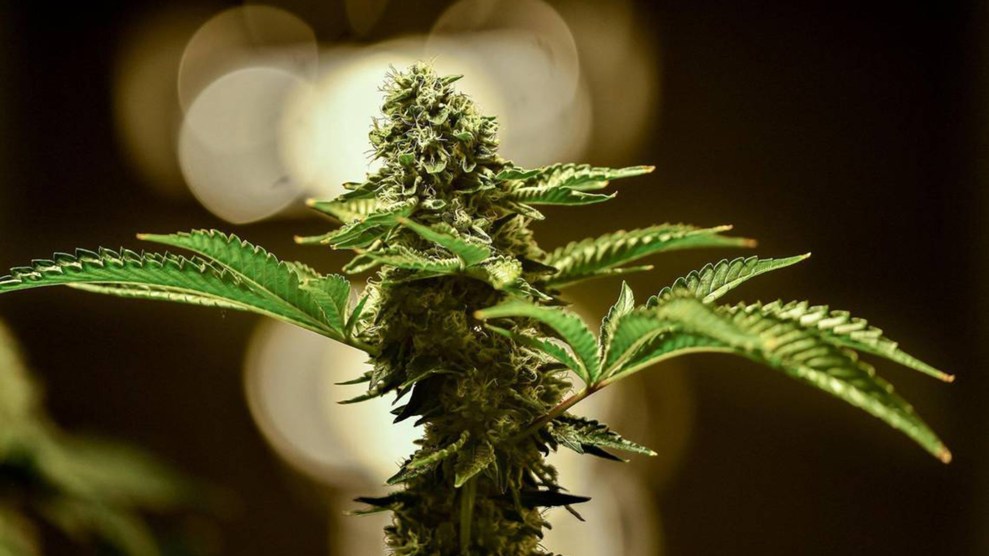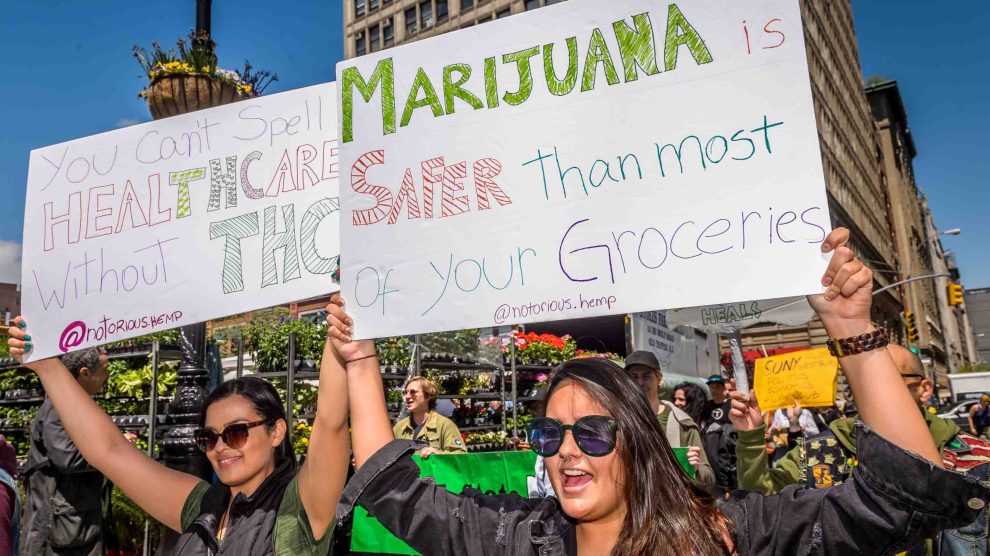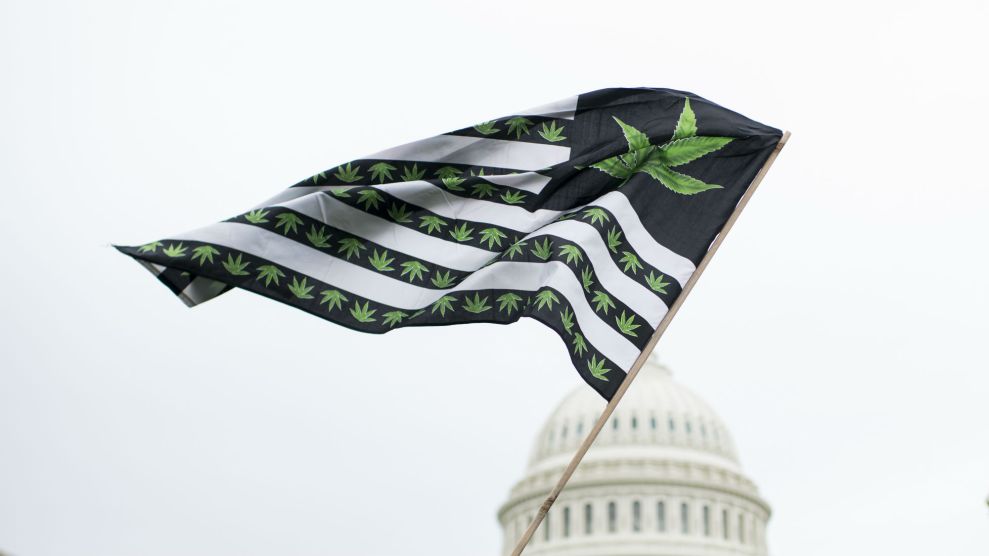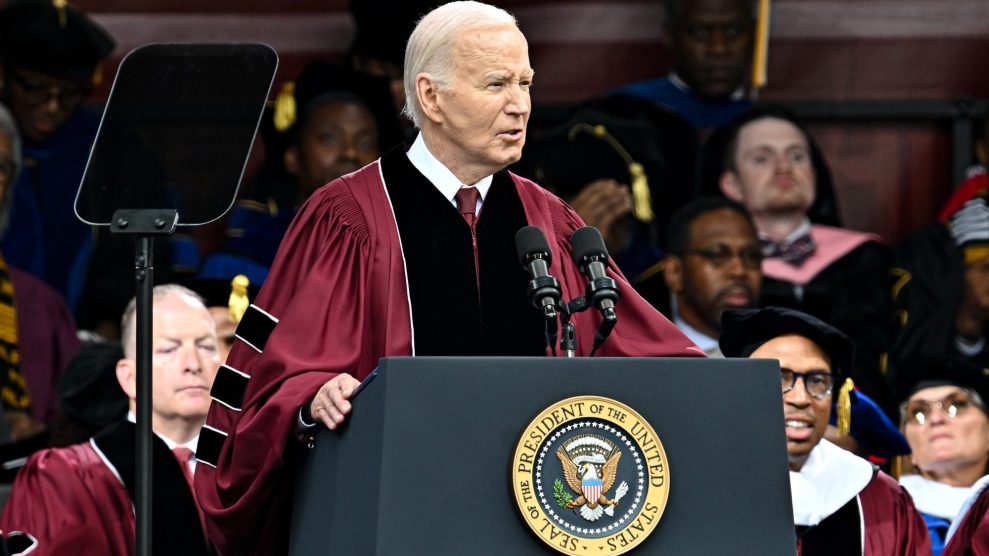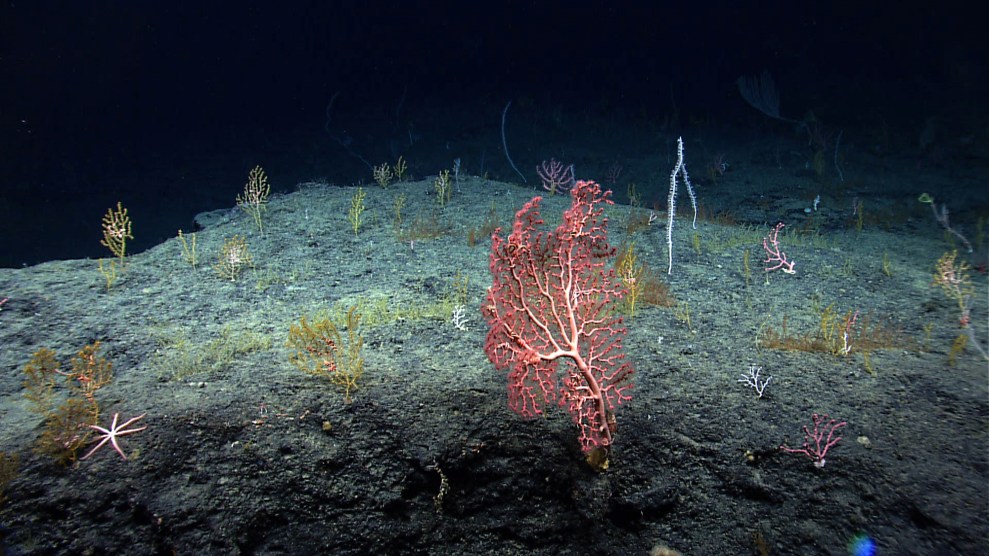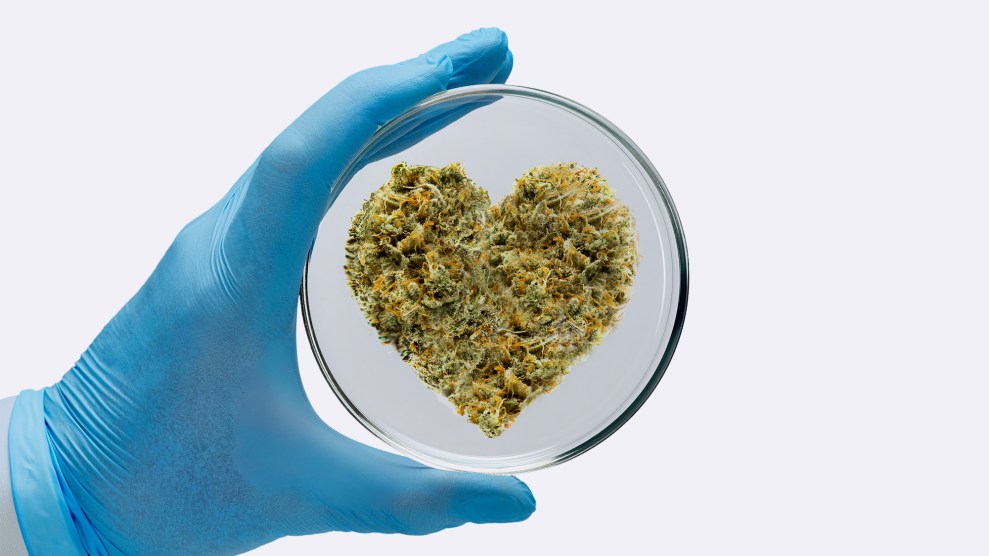
Mother Jones illustration; Getty
After more than 50 years as a Schedule I substance, marijuana is slated to get reclassified. In a historic shift, the Drug Enforcement Administration reportedly plans to modify the drug’s designation under the Controlled Substances Act from a category that includes drugs like heroin and meth to the less dangerous but still illegal Schedule III, alongside ketamine and anabolic steroids.
Schedule I drugs, as my colleague Julia Métraux reported last week, by definition have a “high potential” for abuse without any “currently accepted medical use.” With the change to Schedule III, explains Harvard neuroscientist Staci Gruber, who studies the effect of marijuana on our brains, “We’re no longer saying ‘no accepted medical value.’ That’s a big difference. It is an acknowledgment that there is some accepted medical value.”
It may also be a blessing for researchers like Gruber. Studying a Schedule I substance’s medical uses is no trivial task, often involving the kind of extra paperwork, additional security measures, and slower approvals that experts tell me make it burdensome to conduct vital research and make it harder for new scholars to break into the field. A Schedule III designation would ease many of those requirements. And with the cannabis industry growing like, well, a weed, scientists hope the new classification will also mean more quality medical cannabis studies on ailments from pain to nausea to PTSD.
Under the current scheduling regime, the research obstacles are frankly absurd. Consider how pharmacologist and professor Ziva Cooper, who directs UCLA’s Center for Cannabis and Cannabinoids, is required by the DEA to store the cannabis used in her studies: a 750-pound safe, bolted to the floor, with specific locks, and almost “round the clock security provisions.” Under a Schedule III designation, she says, the security requirements would be “much less.” Gruber told me that even non-intoxicating cannabis products used by her lab are stored in a safe that’s “as big as a Subaru.” Igor Grant, a neuropsychiatrist at the University of California, San Diego, School of Medicine, told me that at one point in his career, he and his colleagues planned to work out of a “permanent trailer” with cannabis stored in a safe. But because the trailer wasn’t bolted to the cement, Grant recalls, the DEA decided it “was not an adequate protection against diversion.” Meanwhile, Margaret Haney, neurobiologist and professor at Columbia University Medical Center, keeps her cannabis in a gun safe in a locked room that she opens with her fingerprint. “These are all very, very big hurdles for most clinical researchers,” she says. “It’s expensive.”
On top of that, researchers seeking to study the plant are required to obtain a DEA Schedule I research license, source their products from DEA-approved manufacturers, keep detailed records of how much cannabis is consumed by study participants, record how much is left at the end of the day, and then how it will be disposed of. For example, Haney explains, if she gives a study subject an 800-milligram cannabis cigarette, she has to collect the butt to report to the DEA “exactly how much of it was given” and ensure the entire substance is accounted for. “You treat it like heroin,” she says.
In most cases, study participants can’t take cannabis home with them. But large-scale, randomized controlled trials—the gold standard of clinical research—may require multiple doses per day. In one study, Haney tried a workaround: importing cannabis products from Canada, where it is legal—but even that required permits. “It’s just very hard and long and complicated,” she says, noting she hopes that a change to Schedule III will “lighten the load” for the field. Additionally, Grant explains, if researchers want to pivot from, say, investigating cannabis’s effect on pain in rheumatoid arthritis patients to pain in HIV patients, “you can’t transfer your DEA license to that study. You have to start all over again.” With a Schedule III drug, he says, that’s not the case.
The hurdles don’t just exist at the federal level. In some states, like California, studies involving Schedule I substances require approval from a state review board, which can lengthen study timelines. “Having to have this body review our protocols,” says UCLA’s Cooper, “automatically adds six months to any approval of any study, if we’re lucky.” Universities can also slow researchers’ pace. For example, Grant says, at one UC campus which he asked not to be named, the university was initially “very reluctant” to approve human research on marijuana for fear of violating federal drug laws and jeopardizing the university’s funding. They eventually got on board, but “it took them a while to develop a comfort level,” he says.
Fewer hurdles, experts hope, will mean more room for newbies. “There are many, many levels of regulatory requirements that you need to study Schedule I drugs,” Haney says. “That all leads to very few people doing it.” For researchers who aren’t part of big, well-funded research centers, Grant hopes the scheduling change will allow more scientists to “get into this research” and encourage researchers and institutions to take the field more seriously.
Which makes you wonder, what took the federal government so long? After all, 38 states and DC have approved marijuana for either recreational or medical use, so most Americans already have access to it. When I posed this question to researchers, some underscored that the federal designation hasn’t always been based on science. “I think there’s been a resistance to see the data, because of this kind of bias or attitude that it’s a dangerous thing,” Grant says. Or, as Haney adds, “So much about policy, both pro– and con-cannabis, is political and not science-based. Putting it on Schedule I was a political decision, not a scientific decision.”
As a result, with a kind of circular logic, the DEA’s Schedule I designation, which has for decades insisted there’s no medicinal benefit to cannabis, has made it more difficult for scientists to understand what the medical benefits of cannabis might be—and there are still plenty of questions to answer. We don’t know, Haney points out, what ratio of THC to CBD will be the most effective for a given treatment, for instance, or what route of administration is best. “Is it in pill form? Does it need to be vaped?” she asks. “All these very basic drug development questions we don’t have answers to.”
And as science lags, industry isn’t waiting. As Haney notes, thus far many claims about cannabis’s medical benefits have been determined by industry, anecdotes, and politicians, often “in lieu of science.” This new designation might begin the necessary process “to catch up and to understand what aspects of this plant might be useful, and useful for what.”
“I might be being a Pollyanna,” Haney adds, “but I feel like this is exactly a step in the right direction to start to get answers to the millions of questions we have.”

